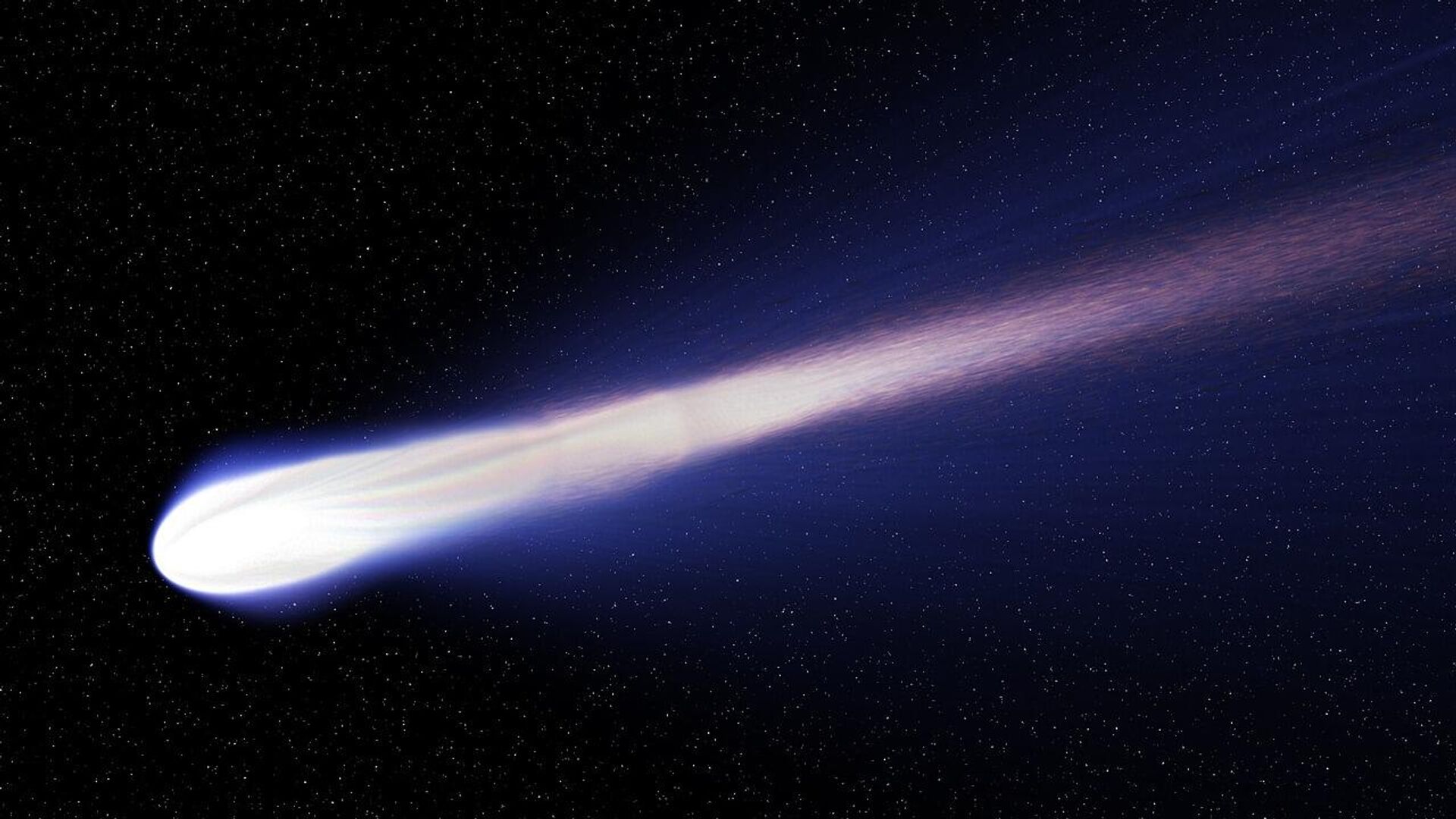https://sputnikglobe.com/20220213/move-away-hale-bopp-the-new-biggest-comet-ever-observed-is-coming-to-town-1092981416.html
Move Away, Hale-Bopp: The New 'Biggest Comet Ever Observed' is Coming to Town
Move Away, Hale-Bopp: The New 'Biggest Comet Ever Observed' is Coming to Town
Sputnik International
Earlier, Hale-Bopp was dubbed the largest comet ever observed. Discovered in 1995, it became visible to the naked eye a year later, measuring 46 miles (74... 13.02.2022, Sputnik International
2022-02-13T08:04+0000
2022-02-13T08:04+0000
2023-04-12T16:57+0000
science & tech
comet
space
https://cdn1.img.sputnikglobe.com/img/07e5/09/1e/1089556967_0:0:1280:720_1920x0_80_0_0_fc74a96da333dc3209dce4a3ba8d1812.jpg
Meet the new comet that is now officially the biggest one ever observed: the Bernardinelli-Bernstein comet.The new discovery has been revealed on the preprint website arXiv and is soon to be published in the journal Astronomy and Astrophysics Letters. Identified in 2021, the Bernardinelli-Bernstein comet is effectively succeeding the Hale-Bopp at the top spot.Compared to Hale-Bopp, which is 46 miles (74 kilometers) in diameter, the new record-breaker has been calculated to be 85 miles (137 km) wide.Also known as comet 2014 UN271, Bernardinelli-Bernstein was named after the two scientists who were first to discover it: University of Pennsylvania cosmologist Gary Bernstein and University of Washington postdoctoral scholar Pedro Bernardinelli. Even though it was identified in 2021, the first images of the comet emerged in 2014, which is why this year is used in the comet's official scientific designation.According to the scientists, the biggest comet ever observed hails from the Oort Cloud - a cloud consisting of rocks and ice that hovers at the edge of the solar system. Its orbit extends a whole light-year from the sun, and it takes 5.5 million years to complete the journey.Currently, the Bernardinelli-Bernstein comet is making its way toward the interior of the solar system. The scientists expect it to be the closest to Earth in 2031, but it will not come too close, remaining somewhere outside the orbit of Saturn.
Sputnik International
feedback@sputniknews.com
+74956456601
MIA „Rossiya Segodnya“
2022
News
en_EN
Sputnik International
feedback@sputniknews.com
+74956456601
MIA „Rossiya Segodnya“
Sputnik International
feedback@sputniknews.com
+74956456601
MIA „Rossiya Segodnya“
science & tech, comet, space
science & tech, comet, space
Move Away, Hale-Bopp: The New 'Biggest Comet Ever Observed' is Coming to Town
08:04 GMT 13.02.2022 (Updated: 16:57 GMT 12.04.2023) Earlier, Hale-Bopp was dubbed the largest comet ever observed. Discovered in 1995, it became visible to the naked eye a year later, measuring 46 miles (74 kilometers) in diameter.
Meet the new comet that is now officially the biggest one ever observed: the Bernardinelli-Bernstein comet.
The new discovery has been revealed on the preprint website
arXiv and is soon to be published in the journal Astronomy and Astrophysics Letters. Identified in 2021, the Bernardinelli-Bernstein comet is effectively succeeding the Hale-Bopp at the top spot.
Compared to Hale-Bopp, which is 46 miles (74 kilometers) in diameter, the new record-breaker has been calculated to be 85 miles (137 km) wide.
Also known as comet 2014 UN271, Bernardinelli-Bernstein was named after the two scientists who were first to discover it: University of Pennsylvania cosmologist Gary Bernstein and University of Washington postdoctoral scholar Pedro Bernardinelli. Even though it was identified in 2021, the first images of the comet emerged in 2014, which is why this year is used in the comet's official scientific designation.
According to the scientists, the biggest comet ever observed hails from the Oort Cloud - a cloud consisting of rocks and ice that hovers at the edge of the solar system. Its orbit extends a whole light-year from the sun, and it takes 5.5 million years to complete the journey.
Currently, the Bernardinelli-Bernstein comet is making its way toward the interior of the solar system. The scientists
expect it to be the closest to Earth in 2031, but it will not come too close, remaining somewhere outside the orbit of Saturn.

